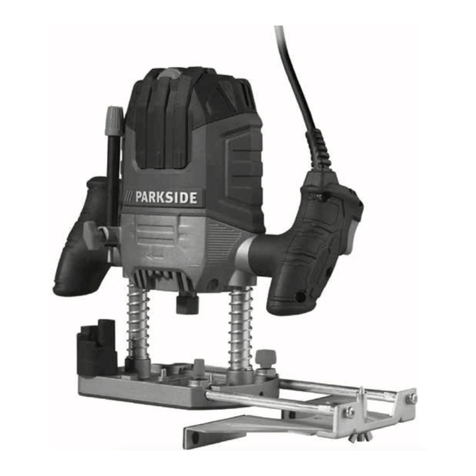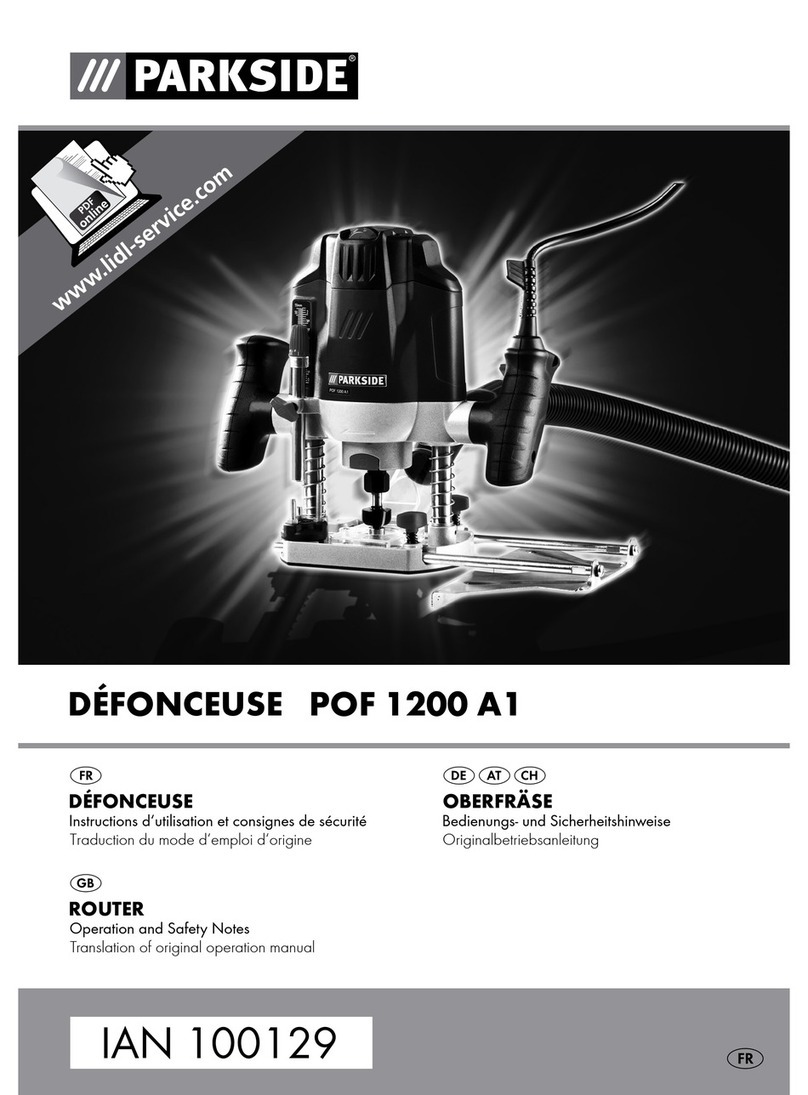Safety advice
JKeep cutting tools clean and sharp. Carefully
maintained cutting tools with sharp cutting edg-
es are less likely to jam and are easier to control.
JUse the electrical power tool, accessories,
inserted tools etc. in accordance with these
instructions and advice, and the stipulations
drawn up for this particular type of device. In
doing this, take into account the working condi-
tions and the task in hand. The use of electrical
power tools for purposes other than those in-
tended can lead to dangerous situations.
Safety advice relating
specifically to this device
JSecurely support the workpiece. Use clamps or
a vice to grip the workpiece firmly. This is much
safer than holding it in your hand.
JDanger of fire from flying sparks!
Machining metal creates flying sparks. For
this reason, always make sure that nobody is
placed in any danger and that there are no in-
flammable materials near the working area.
JWarning! Be aware that persons operating
the tool or in its vicinity may be at risk of being
in contact with or inhaling dusts.
JTake all the necessary safety precautions in
relation to dusts. Working with this tool can give
rise to dusts that may be hazardous to health,
inflammable or explosive.
JHarmful or poisonous dusts can, for example,
arise from machining paints containing lead, or
from certain types of hardwoods or metals.
Some dusts are classed as carcinogenic. Wear
a breathing mask and use a suitable dust/chip
vacuum extraction device.
JWarning! Keep your working area clean.
Mixtures of materials can be particularly dan-
gerous. Light metal dust, for example, may
burn or explode.
JmWarning! Danger of electric shock
from metal dust!
Machining metal can result in electrically con-
ductive dust being deposited inside the device.
In these circumstances the inside of the motor
compartment must be blown out at frequent in-
tervals with compressed air, vacuum extraction
used and the device operated through a residual
current device (RCD) with a maximum trip cur-
rent of 30 mA.
JEnsure that there is adequate ventilation when
machining surfaces containing plastic or covered
with paint, varnish etc., otherwise there may be
a risk to your health through the generated dust.
JDo not machine materials containing asbestos.
Asbestos is a known carcinogen.
JAvoid contact with the rotating router bit, other-
wise there may be risk of injury .
JDo not machine moist materials or damp surfaces,
otherwise there may be a risk of electric shock.
JNever leave the device working unattended,
otherwise there may be a risk of injury or accident.
JNever use the device for a purpose for which it
was not intended. The use of electrical power
tools for purposes other than those intended can
lead to dangerous situations.
JAlways work with the mains lead leading away
from the rear of the device.
JCheck before use that the router is firmly seated
in position, otherwise there may be a risk of
injury or accident.
JIf a dangerous situation arises, pull the mains
plug immediately out of the mains socket.
JBefore you insert the mains plug into the socket,
always check that the device is switched off.
Accidents can happen if you carry the device
with your finger on the ON/OFF switch or you
have already switched the device on before
you connect it to the mains.
JAlways switch on the device before guiding it
against the workpiece, otherwise there may be
a risk of injury from kick-back.
JAfter a routing task has been completed, lift the
device off the workpiece and turn the clamping
lever to bring the device into its top position and
then switch it off.
JSwitch the device off and allow it to come to a
complete standstill before you put it down, oth-
erwise there may be a risk of injury from rotat-
ing parts.
JNever machine over metal objects, nails or
screws, otherwise there may be a risk of injury
or damage to the device.
JHold the device only by the insulated handle if
there is the risk that you might cut through a































